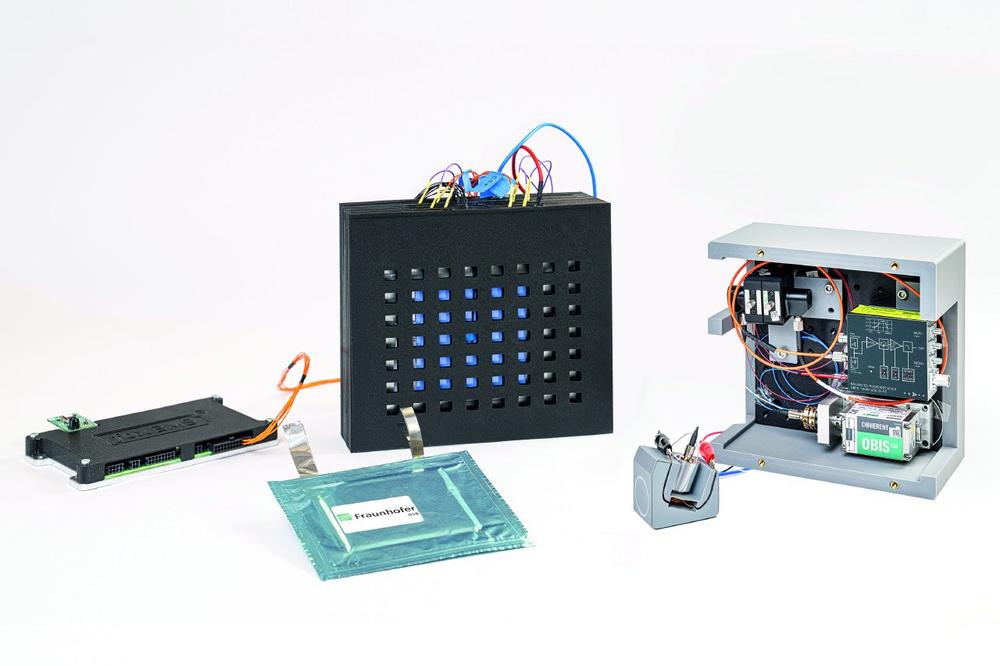From cell to recycling: integrated value chain for an innovative battery system
The rising demand for electrical energy – driven, for example, by the need to store and balance renewable energy – calls for suitable storage solutions. The rechargeable aluminum-graphite-ion battery (AGDIB) meets this need with its low-cost and easily available active materials aluminum and graphite. As a high-power storage device, the AGDIB can be charged and discharged in a very short time at high rates. This makes the AGDIB ideal for applications such as dynamic grid stabilization, where batteries are used to balance frequency fluctuations with many low-energy micro cycles that favor high power performance over high energy density.
While many new Li-free battery technologies are examined on lab-size cell level, battery system demonstrators employing new cell chemistries remain rare. However, such a battery system demonstrator based on AGDIB has now been set up within the INNOBATT project after scaling the technology to small-size pouch cells in previous research projects first. The development of this innovative battery system focuses on the whole value chain, from a sustainable Li-free cell chemistry over integration of wireless battery management system (BMS) and bidirectional quantum-based current sensor technologies to recyclability considerations.
Demonstrator validates stability of new Al-ion battery cells
In a realistic test case, the INNOBATT demonstrator proves the stability of the new type battery cells. Integrating eight AGDIB pouch cells with a wireless BMS based on the open source BMS platform foxBMS® from Fraunhofer IISB with secure radio frequency based (RF) communication, the prototype also features a novel diamond-based quantum sensor for high-resolution current measurement.
AGDIB active materials and cell design were improved to increase stability and reliability of the cells and ensure reproducible performance metrics. This allowed for a proper cell matching despite the manual manufacturing technology. The battery module was assembled in 4s2p configuration, employing a BMS-Slave with a safe wireless RF communication to the BMS-Master. The quantum sensor is based on NV-centers in diamond. In comparison to conventional current sensors, the measuring range covers five orders of magnitudes. Consequently, both small and large dynamical currents can be measured with a very high resolution.
This battery system successfully validates the Al-ion based cell chemistry and its high-power capabilities for grid stabilization applications. Previously obtained results on cell level could be verified within the whole battery module by emulating instantaneous reserve applications based on real frequency data. The system proves stable performance with dynamic high current loads at 10C over long time periods and therefore demonstrates AGDIB’s ability for upscaling via successful cell manufacturing, cell interconnection and system integration. A major advantage of AGDIB is that it allows for very high discharge rates and, unlike many established battery systems, also high charging rates, as required for grid applications (e.g. providing virtual inertia).
The recyclability of the cells and modules was carefully considered during development. Cell recyclability was assessed through a physical separation process that eliminates the use of toxic chemicals, thereby facilitating the establishment of closed material cycles. The module design followed a design-for-recycling strategy, surpassing current EU regulatory requirements for battery recycling efficiencies and leading to the advancement and demonstration of this sustainable energy storage system.
The Fraunhofer Institute for Integrated Systems and Device Technology IISB is one of Europe’s leading research institutions for wide-bandgap semiconductors and power electronics, covering the complete value chain. The spectrum ranges from basic materials, semiconductor devices and process technologies, power electronic modules and components to complex power electronic and energy systems.
Main target applications of the IISB are semiconductor manufacturing, electromobility, aerospace, sustainable energy supply as well as civil security. With its solutions, the institute has been setting benchmarks in energy efficiency and performance, even for extreme operating conditions. The integration of intelligent data-based functionalities also continuously opens up new application scenarios. This allows the IISB to support customers and partners worldwide in transferring scientific results into commercial products.
A total of around 400 employees work at the IISB’s locations: the headquarters in Erlangen, the Cleantech Innovation Park in Hallstadt, and the Fraunhofer Technology Center High Performance Materials THM in Freiberg.
Fraunhofer-Institut für Integrierte Systeme und Bauelementetechnologie IISB
Schottkystraße 10
91058 Erlangen
Telefon: +49 (9131) 761-0
Telefax: +49 (9131) 761-390
http://www.iisb.fraunhofer.de
Group Manager Battery Materials
Telefon: +49 3731 2033 – 105
E-Mail: franziska.jach@iisb.fraunhofer.de
![]()
